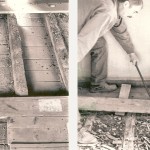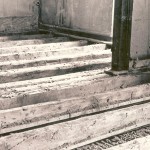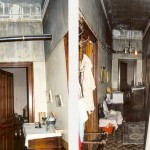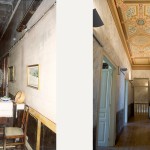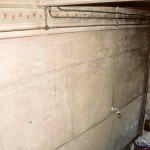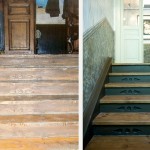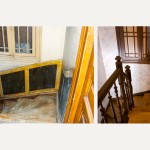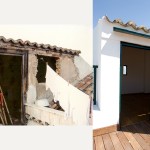This building has been declared a Historic Monument. All renovations and upgrades were approved by Presidential Decree and conducted under the supervision of certified architects and engineers. Below the images is a list of key improvements. Note that a complete photographic archive of the renovations is available and will be included with the purchase agreement.
-
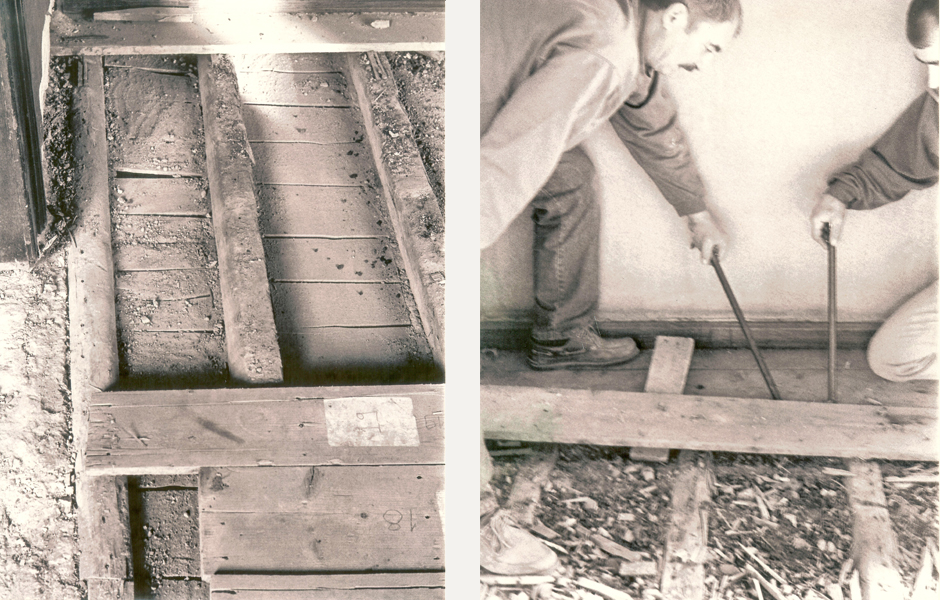
Second floor’s wood planks were first numbered then carefully removed in order to reach the first floor’s ceiling which was sagging and needed to be pulled up and reinforced.
-
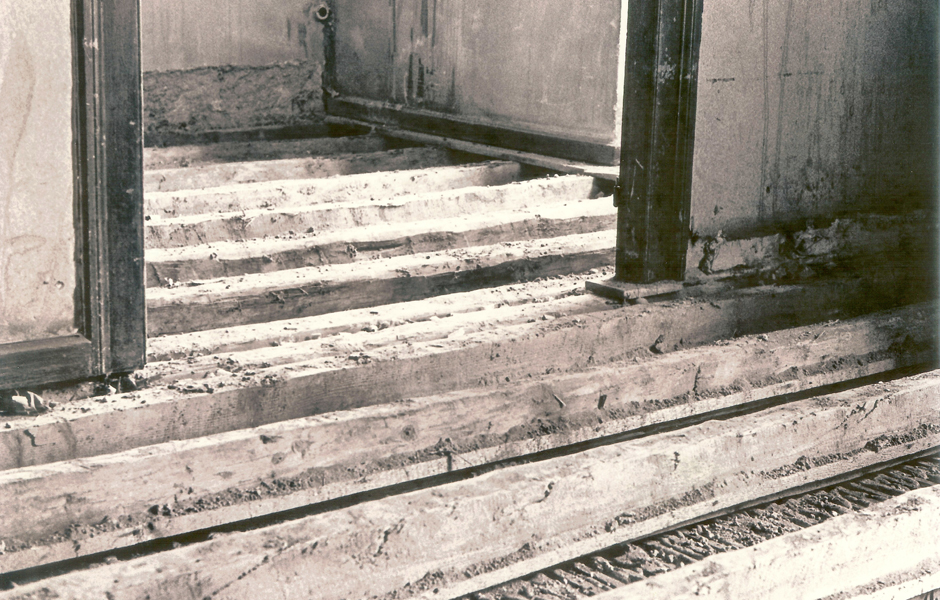
Once the floor planks were removed, the beams were revealed. The space between them was filled with dirt and other construction material. Originally it was thought that the builders filled them with detritus instead of dumping it
-
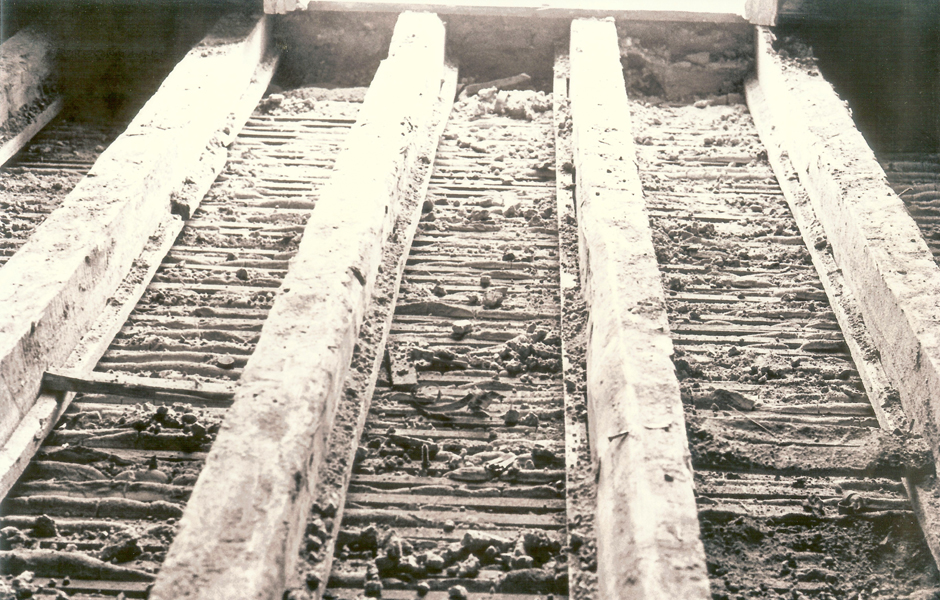
Once all the insulation was removed the perfectly straight beams were revealed and the craftsmanship of these turn of the century workers was an inspiration to the people renovating this building. Before replacing the wood floor planks, modern noise insulation was installed in lieu of the dirt originally found.
-

In a futile attempt at post-painting-over decoration, a red band was painted at one point. The ever sneaking through-the-house electrical conduit can be seen rising from the left and disappearing through the wall on the right.
-

Originally the house did not have a fireplace. Since there were no furnaces at the time, one must conclude that there was no possibility of heating the house in winter. High ceilings would provide for heat relief in the summer. Perhaps winters were not so hard in the late 1800s. Later, the owners decided to install a charcoal stove. We see the thick pipes that carry the hot air (and charcoal particles) through the corridor. Over the years, suit covered the entire corridor and turned it black.
-

When the stove was removed and the ceiling was scraped clean, one of the most beautiful paintings was revealed and was of course restored. The corridor on the first floor was also covered with paint and it was assumed when the building was purchased by the current owner, that the corridors were never painted.
-
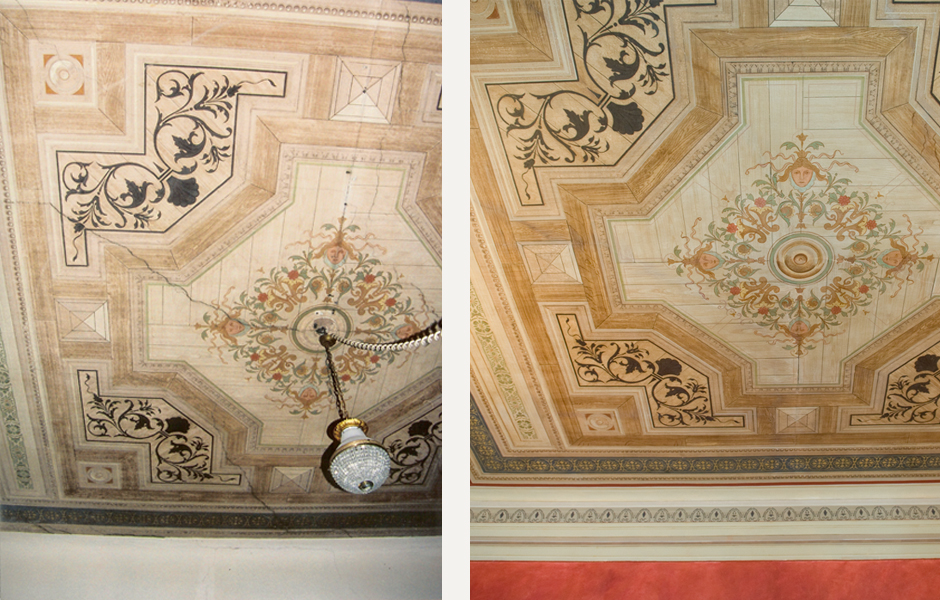
Cracks developed on all ceilings due to more than one hundred years of walking and the weight on the furniture on the floor above. Probably some were caused by heavy seismic activity. Fixing these cracks required the lifting and securing of the wood strips that hold the plaster on which the paintings were made. Gaps were then filled with new plaster.
-

Side entrance power grid! All such electrical interventions were removed and it was decided that there will be no electrification on the ceilings in order to preserve the original state of these wonderful paintings.
-

In total disregard to the beauty of the ceiling paintings and succumbing to the modern necessities of electrification, electrical tubing was affixed to the ceiling and holes were drilled to attach hanging light fixtures.
-

Main entrance staircase
-
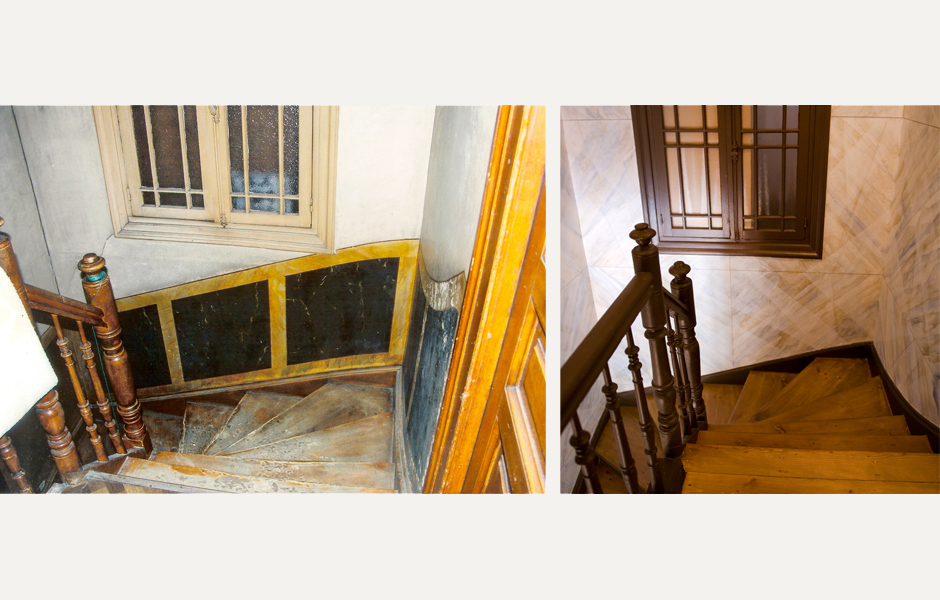
Side entrance interior stairs
-

The entire footprint of the house would have been a terrace except that in order to protect and give access the painted ceilings below, the original architect decided to use this ingenious method. A room, as well as the kitchen below the terrace do not have painted ceilings for this reason.
-
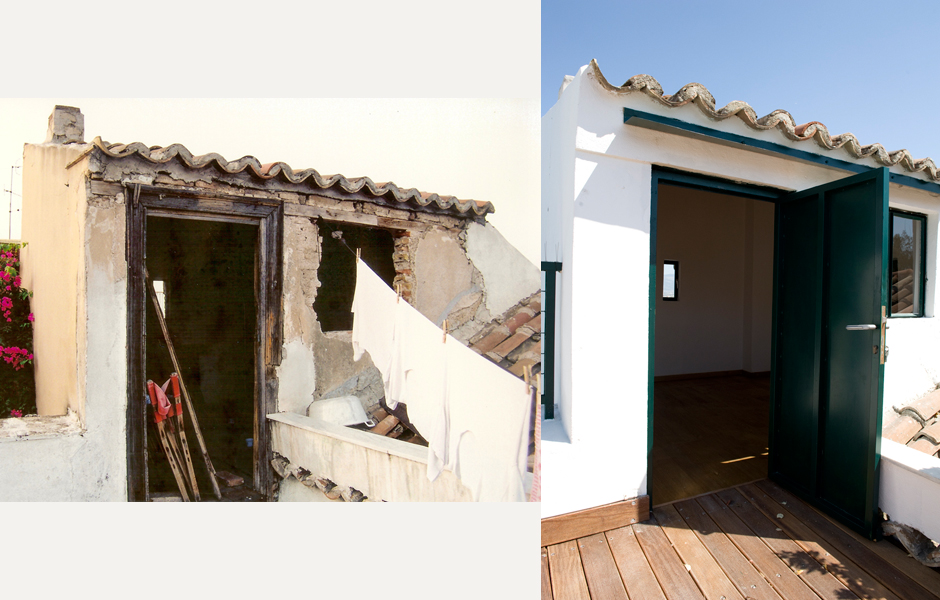
The dilapidated storage room on the terrace, now completely restored.
Reinforced Walls
Although it had remained intact for more than 100 years, in order to comply with current building codes for general purpose use, the entire lower ground floor was reinforced with concrete walls.
An Elevator
An elevator was installed to service the second floor, making it more accessible due to the floor’s high ceilings. This was built on the back of the building without affecting the existing architectural elements.
Electrical Wiring
Originally the building was not electrified and subsequent wiring was added haphazardly on the walls and ceilings. All were replaced with concealed up-to-date wiring, including internet connections.
Lighting
To preserve the original intent of the ceiling paintings and to enhance their viewing, indirect light fixtures were installed on the walls.
Heating & Cooling
Each floor has its own electrical panel and a new HVAC system has been installed to provide heating and cooling to all three floors. All the pipes have been concealed, leaving no visible trace of this modernization.
Restored Painted Ceilings
All the detailed ceiling paintings and wall colors have been restored to their original designs and colors, based on highlights discovered below several subsequent coats of paint. The restoration took two years by two trained artists/archeologists.
Office Space
The lower level has been renovated and equipped with office-style light fixtures, a modern bathroom and a modern kitchenette.

